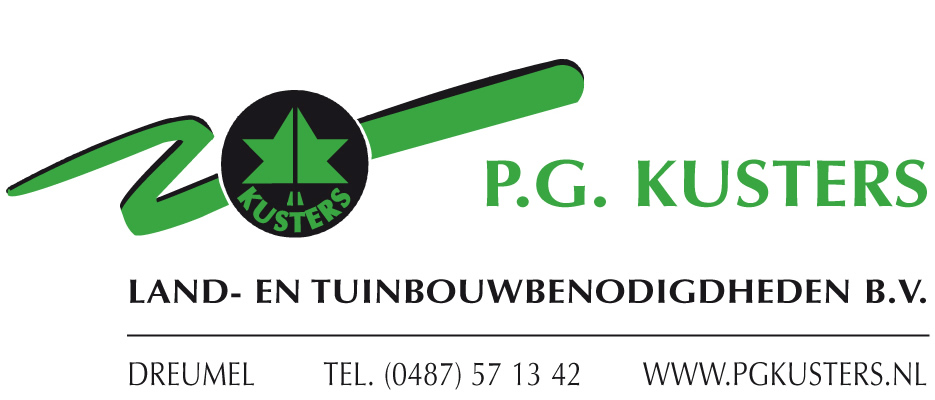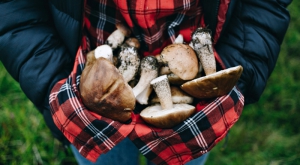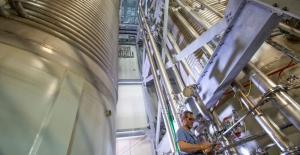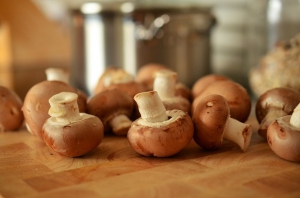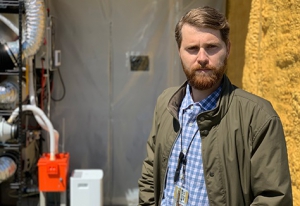The global mushroom cultivation market will grow enormously in the coming years. This is evident from the report of QYResourch. They have mapped the market analysis and insights for the global mushroom cultivation market for a period up to 2027. That is a good prospect for the growers of white mushrooms, oysters and shiitake. But growers of other mushrooms will also benefit from this. The analysis focuses on sales, revenue and forecast. The research process involves the study of various factors affecting the industry, including government, policy, market environment, historical data, current trends, technological innovation, risks, opportunities, barriers and challenges. The market estimates in this report are based on the market price of mushroom cultivation. Figures have also been identified through primary and secondary research at mushroom companies. Primary research included interviews with key opinion leaders or industry experts as well as with directors and marketing executives, while secondary research consisted of examining annual and financial reports. All possible factors influencing the markets included in this study have been taken into account, such as inflation, economic downturn and changes in regulations and policies or other factors. But if we can start from these predictions, growers worldwide have a bright future.
To request the full report, please click here.
Source: QYresearch
Organic trend stimulates the sales market
The consumer demand for residue-free food is increasing, and chemical alternatives in mushroom cultivation are becoming less and less available.
E-nema GmbH supports this change. It is the world market leader and has decades of experience in the production of useful nematodes.
Useful nematodes are natural opponents of many pests in ornamental plant breeding, on strawberry, blueberry and apple orchards as well as in maize cultivation. They are also increasingly being used, successfully within the mushroom cultures, in the fight against sciarids.
Nematodes are barely visible to the naked eye, but they are very effective. They are sent all over the world to be used in biological crop protection.
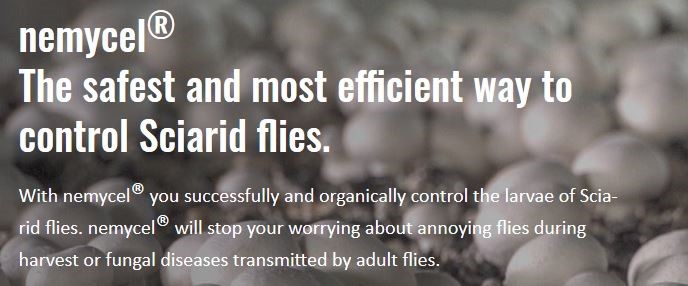
The main sales markets are currently in Europe and North America, but countries such as New Zealand and Africa are also increasingly relying on biological alternatives to chemical crop protection.
E-nema maintains close contact with its customers and will in future, be at the side of the mushroom grower as a partner with scientific expertise and an effective biological product against sciarids.
Despite the pandemic, sales of the north German company e-nema GmbH rose by more than 30% last year.
The company will continue to invest in modern systems and in the qualifications and motivation of its employees. Their number is expected to increase from currently 60 to 100 in the coming years and a doubling of sales from 10 million in 2019 to 20 million by 2024 is also planned.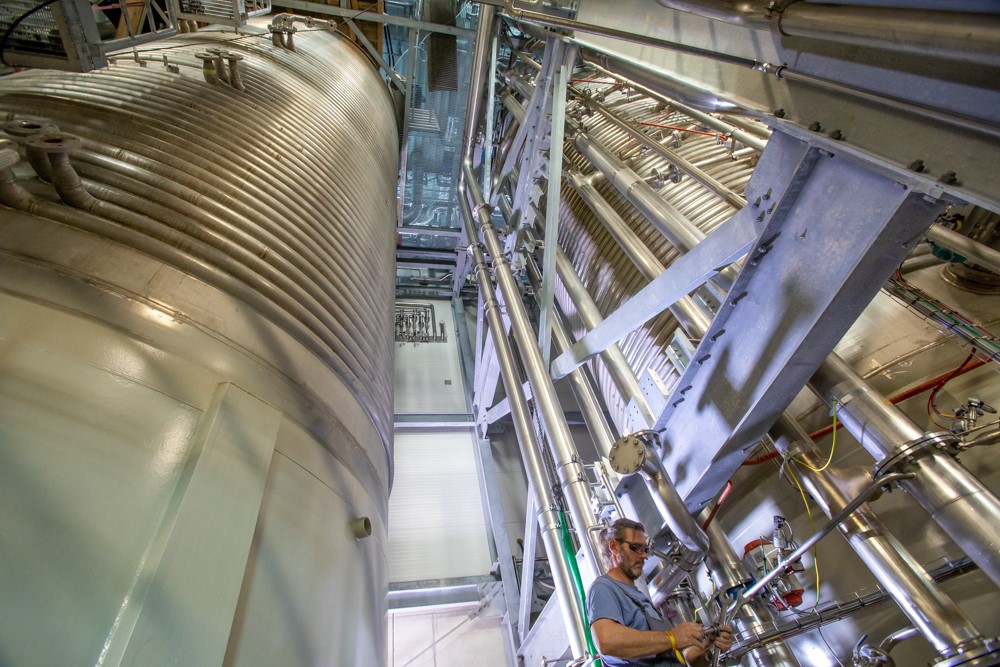 In these huge bioreactors, e-nema GmbH produces useful nematodes for biological crop protection
In these huge bioreactors, e-nema GmbH produces useful nematodes for biological crop protection
Photo: k-film, Michael Kottmeier
Mushroom cultivation produces three times its weight in waste. It’s now being turned into burgers and fertiliser
Cultivating mushrooms produces a lot of waste. For every kilogram of mushrooms produced, about three kilograms of soil-like material containing straw, manure and peat is left behind. In the EU, this results in more than 3 billion kilograms of waste per year.
Managing this waste is a challenge. Although it is rich in organic matter, and therefore useful as compost, used mushroom substrate – the soil-like material – contains a lot of water, which makes it heavy and unprofitable to transport. Some of it is used as compost in agricultural land close by but the vast majority that remains ends up being stored temporarily then landfilled.
‘Every year we have more and more waste,’ said Pablo Martinez, project manager at the Mushroom Technological Research Center of La Rioja in Spain. ‘So, we need larger and larger areas just to manage this waste.’
More mushroom waste could soon be given a second life though thanks to new innovations. Dr Bart van der Burg, Director of Innovation at BioDetection Systems in Amsterdam, the Netherlands, and his team are interested in discarded mushroom parts, such as stems, and deformed mushrooms, which are part of the cultivation leftovers. They are aiming to extract components such as proteins, carbohydrates, fats and chitin – a fibrous substance – from them as part of the Funguschain project. Their goal is to incorporate these extracts into new products such as novel foods, cosmetics and bioplastics. ‘I think we will end up with at least three products coming out of this project,’ said Dr van der Burg.
Read the complete article here!
This article was originally published in Horizon, the EU Research and Innovation magazine and written by Sandrine Ceurstemont.
Imagine being able to sustainably produce a nutritious and delicious food product that is not constrained by specific environmental conditions required to support a predominately plant-based agricultural industry.
Kennesaw State University researcher Christopher Cornelison is exploring the possibilities of improving the food supply chain by leveraging innovative technology to expand the opportunities for mushroom production in Georgia.
“We must be able to develop sustainable methods for producing readily preserved and nutritious foods without regional climactic limitations,” said Cornelison, an assistant professor of microbiology in the College of Science and Mathematics and director of the BioInnovation Laboratory at KSU. “Mushrooms are an ideal crop as they only rely on three environmental factors that can be regulated to optimize growth yield—humidity, temperature and carbon dioxide concentrations.”
Although sales of these spore-bearing fruiting bodies of fungi accounted for more than $3.1 billion in U.S. economic impact according to a 2019 American Mushroom Institute report, they are still underutilized.
Cornelison said more than half of the nation’s mushroom production is associated with a single county in Pennsylvania. The substrate used in this production, primarily mulch, is transported from the Midwest to meet the demand.
That is why Cornelison is now focused on determining the feasibility of growing culinary and commodity mushrooms in Georgia via low-cost and efficient production systems housed in modified shipping containers with embedded environmental control systems.
With a new $25,000 award from the venture development program of the Georgia Research Alliance (GRA), Cornelison’s goal is to study the potential commercialization of growing these mushrooms on media or substrates of regional agricultural wastes such as peanut shells, corn chaff or spent brewing grains.
Please read the full article here



